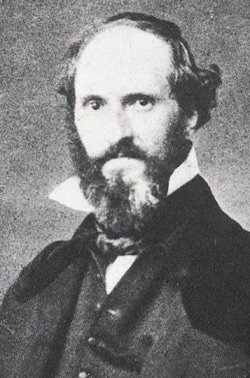Richard Spruce

- Born
- 10 September 1817
- Died
- 28 December 1893 (age 76)
Over a period of 15 years, Richard Spruce explored distant and exotic lands to build a collection of specimens that would change the world of science forever. Spruce was a botanist, and spent much of his life deep in the Amazon, following the river from its source in the Andes to its mouth in the Atlantic. His collections have become an exceptionally important resource, and to this day are still carefully stored in institutions around the UK, such as Kew Gardens, London.
Spruce grew up in the small villages of Ganthorpe and Welburn in Yorkshire, both of which were world's apart from the jungles in which he'd spend many years documenting species. His fascination with plants and botany had, however, started there at a very young age.
By the time he was 16, Spruce had already noted down every single plant that he found around his home town. This equated to 403 different species, all of which he ordered and described in as much detail as he could. This behaviour stemmed from a natural curiosity and a love of nature of all kinds; a love which even stretched to the stars as he also thoroughly enjoyed studying astronomy. However, as beautiful and fascinating as the night sky was to him, he couldn't touch the stars with his bare hands, and botany instead became his life long passion.
Spruce's first trip began in 1845 when he was sent off to the Pyrenees for a year. This wasn't enough for Spruce, as a few years later he joined Alfred Russell Wallace and disappeared into the jungle with him for over a decade. The result of this expedition was a collection of over 30,000 specimens of plants and his comprehensive paper The Hepaticae of the Amazon and the Andes of Peru and Ecuador.
Regardless of his magnificent journeys, Spruce didn't forget about home. On his return to England he single-handedly contributed to increasing the number of Yorkshire's recorded mosses by 42 times compared to that which were already documented, massively increasing our knowledge of the plant species around us.
One of his most interesting and impacting contributions was through his cultivation of quinine. This is a bitter bark that has been used by native South Americans for hundreds of years as a cure for malaria. Because of his actions in cultivating this bark, he made is accessible to a huge number of people who otherwise wouldn't have had access to it.
Unlike many great scientists, Spruce never held a position at a university ,but this does not mean that he and his work wasn't truly incredible. He was awarded a PhD in 1864 and was elected as a Fellow of the Royal Geographical Society in 1866.



